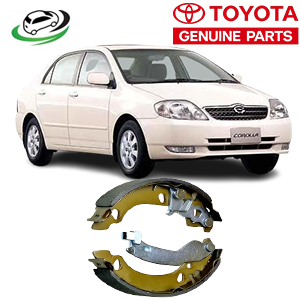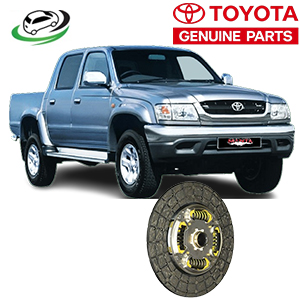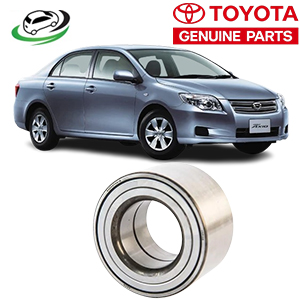-8%
Get Toyota Axio NZE144 Front Wheel Bearing Without Magnet 90363-40066
Front wheel bearings are critical components in a vehicle’s suspension system, playing a key role in allowing the wheels to rotate smoothly while supporting the vehicle’s weight. They are essential for ensuring the safety, stability, and overall performance of the vehicle. Unlike some modern wheel bearings that may include integrated sensors or magnets for traction control systems, a front wheel bearing without a magnet operates using traditional designs and methods. This article provides an in-depth exploration of front wheel bearings without magnets, covering their types, functions, construction, maintenance, and replacement.
1. Understanding Wheel Bearings
Wheel bearings are sets of steel balls or rollers encased in a metal ring, called a race. These bearings facilitate smooth rotation between the wheels and the axle. In front-wheel drive vehicles, front wheel bearings bear the weight of the engine and transmit the vehicle’s power to the road through the front wheels.
Types of Wheel Bearings
There are several types of wheel bearings, but the most common ones found in vehicles include:
- Conical Roller Bearings: These are used in applications where high radial and axial loads are expected. They consist of tapered rollers that allow for the distribution of loads in multiple directions.
- Ball Bearings: These consist of spherical balls and are commonly used in passenger vehicles. They handle both radial and axial loads and are designed for lower friction and smoother operation.
- Angular Contact Bearings: These bearings can support both radial and axial loads, allowing for higher speeds. They are often used in high-performance applications.
- Hub Assemblies: Modern vehicles may use hub assemblies that integrate the wheel bearing with other components, such as the ABS sensor. While these may contain magnets, traditional front wheel bearings without magnet do not.
2. The Function of Front Wheel Bearings
The primary functions of front wheel bearings include:
- Load Distribution: Wheel bearings support the weight of the vehicle, distributing the load across the entire wheel assembly.
- Smooth Rotation: They reduce friction between the wheel and the axle, allowing for smooth and efficient wheel rotation.
- Alignment and Stability: Properly functioning wheel bearings ensure that the wheels remain aligned and stable during operation, which is crucial for handling and safety.
- Noise Reduction: High-quality wheel bearings help to minimize noise and vibrations generated during wheel rotation, contributing to a more comfortable ride.
3. Construction of Front Wheel Bearings
A typical front wheel bearing without a magnet consists of several key components:
- Inner Race: The inner race is the part of the bearing that fits onto the wheel hub or axle. It has a smooth surface for the balls or rollers to roll against.
- Outer Race: The outer race is the portion of the bearing that fits into the wheel assembly. It is designed to hold the balls or rollers in place while allowing for rotation.
- Rolling Elements: These can be either balls or rollers, depending on the bearing design. They provide the actual rolling surface that reduces friction and wear.
- Retainer or Cage: The retainer keeps the rolling elements evenly spaced within the races, ensuring smooth operation and preventing contact between the rolling elements.
- Seals or Shields: These components protect the internal parts of the bearing from dirt, moisture, and debris, which could cause premature wear and failure.
Materials Used
Front wheel bearings are typically made from high-carbon chromium steel or other durable materials. These materials provide excellent resistance to wear and fatigue, ensuring a long service life.
4. Signs of Worn or Failing Front Wheel Bearings
Recognizing the signs of worn or failing wheel bearings is crucial for maintaining vehicle safety. Some common symptoms include:
- Unusual Noises: A grinding, humming, or growling noise coming from the wheel area, especially when turning, can indicate worn bearings. As the bearing deteriorates, the noise may become more pronounced.
- Vibration: Excessive play in the wheel bearing can cause vibrations in the steering wheel or the vehicle itself, particularly at higher speeds.
- Uneven Tire Wear: Worn wheel bearings can lead to misalignment, causing uneven wear patterns on the tires.
- Play in the Wheel: A visual inspection can help determine if there is excessive play in the wheel. When the vehicle is lifted, grabbing the tire at the 12 o’clock and 6 o’clock positions should not show any noticeable movement.
- ABS Warning Light: In vehicles equipped with an ABS system, a failing wheel bearing can trigger the ABS warning light. While this is more common with wheel bearings containing magnets, it’s still relevant as some systems rely on bearing integrity for functionality.
5. Maintenance of Front Wheel Bearings
Proper maintenance of front wheel bearings is crucial for ensuring their longevity and reliability. Here are some key maintenance tips:
5.1 Regular Inspections
Routine inspections should be conducted, especially during tire rotations or oil changes. Check for any signs of wear, damage, or abnormal noises.
5.2 Greasing
Some wheel bearings require periodic greasing to maintain their performance. If the bearings are serviceable (not sealed), a high-quality wheel bearing grease should be used. This helps to reduce friction and prevent overheating.
5.3 Proper Installation
When replacing wheel bearings, ensure that they are installed correctly. Misalignment during installation can lead to premature failure.
5.4 Environmental Protection
Keep the wheel bearing area clean and free of debris. This can be achieved by regularly cleaning the brake components and ensuring that the seals are intact.
5.5 Monitoring Tire Pressure
Maintaining the correct tire pressure helps reduce stress on the wheel bearings. Overinflated or underinflated tires can cause uneven wear on the bearings.
6. Replacing Front Wheel Bearings
When it becomes necessary to replace front wheel bearings, the process typically involves the following steps:
6.1 Gather Tools and Materials
You’ll need the following tools and materials for the replacement process:
- Jack and jack stands
- Lug wrench
- Socket set
- Torque wrench
- Bearing puller or slide hammer
- Grease
- New wheel bearings
- Seals (if applicable)
6.2 Raise the Vehicle
Use the jack to lift the vehicle and secure it with jack stands. Ensure the vehicle is on a stable surface.
6.3 Remove the Wheel
Using the lug wrench, loosen and remove the lug nuts, then take off the wheel to access the brake components and wheel hub.
6.4 Remove the Brake Components
Detach the brake caliper and rotor to access the wheel bearing assembly. Make sure to support the caliper to avoid damaging the brake line.
6.5 Extract the Old Bearing
Use a bearing puller or slide hammer to remove the old bearing from the hub. Take care not to damage the hub or other components during this process.
6.6 Clean and Inspect
Clean the hub area and inspect for any damage. Replace any worn or damaged components, such as seals or retainers.
6.7 Install the New Bearing
Carefully press the new bearing into place. Make sure it is properly aligned to avoid damage.
6.8 Reassemble the Brake Components
Reattach the brake rotor and caliper, ensuring all hardware is properly tightened. Follow the manufacturer’s torque specifications.
6.9 Reinstall the Wheel
Place the wheel back onto the hub, hand-tightening the lug nuts before lowering the vehicle.
6.10 Torque the Lug Nuts
Once the vehicle is lowered, use a torque wrench to tighten the lug nuts to the manufacturer’s specifications.
6.11 Test Drive
After replacing the bearing, take the vehicle for a test drive to ensure proper operation. Listen for any unusual noises and check for smooth steering and handling.
7. Conclusion
Front wheel bearings without magnets play a crucial role in a vehicle’s performance and safety. Understanding their function, construction, and maintenance is essential for every vehicle owner. By recognizing the signs of wear and following proper maintenance and replacement procedures, drivers can ensure their vehicle operates smoothly and safely. Regular inspections and timely replacements are key to extending the life of front wheel bearings and maintaining optimal vehicle performance. Whether you’re a mechanic or an automotive enthusiast, knowledge of front wheel bearings is invaluable for keeping vehicles on the road in prime condition.
Follow us on Facebook for more parts.




Reviews
Clear filtersThere are no reviews yet.